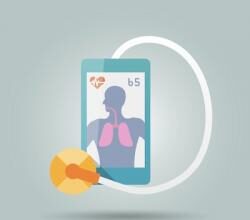Pilots-in-training don’t have immediate access to the cockpit of a Boeing 757. They are first placed in a simulator, navigating through bad weather, mechanical failures, and other adverse conditions to gain experience handling possible crises in a safe environment.
Pilots-in-training don’t have immediate access to the cockpit of a Boeing 757. They are first placed in a simulator, navigating through bad weather, mechanical failures, and other adverse conditions to gain experience handling possible crises in a safe environment.
A recent study from Montefiore Medical Center published October 15 in Archives of Otolaryngology-Head & Neck Surgery entitled, “Criterion-Based (Proficiency) Training to Improve Surgical Performance,” finds a great analogy between pilot training and surgery simulations for medical students.
According to the authors, requirements for surgical proficiency, including the performance of a fixed number of surgeries, insufficiently assess surgical capabilities and don’t take individual learning differences into account—differences that can often go unnoticed until surgeons are placed in the operating room for the first time.
Additionally, the authors revealed that simulation training can vastly improve trainee surgeons’ skills prior to operating on live patients. Marvin P. Fried, MD, FACS, University Chairman Department of Otorhinolaryngology-Head and Neck Surgery at Montefiore Medical Center, was the Principal Investigator of this study, which took place over a five-year period and is the last in a series of studies carried out by Dr. Fried and his team.
“My interest in studying simulation started over a decade ago. Montefiore actually purchased this endoscopic sinus simulator that was made by Lockheed Martin, at a time when Lockheed had really been only making products for defense,” Fried says. “The research for the first five years examined if the simulator were indeed accurate, could it measure high-stakes circumstances that can happen in the operating room’”
The recent paper published the results of a follow-up study designed to measure whether students trained on the simulator would perform better in a real-live environment based on certain pre-decided metrics. According to a news release from Montefiore, 20 subjects from Montefiore Medical Center and New York University Medical Center were divided into three groups. There were 14 Otorhinolaryngology junior residents in post-graduate years 1 through 3 assigned to an eight-subject experimental group or a six-subject control group. There was also a third group of six attending surgeons who set the benchmarks against which the students were measured.
All[J1] three groups performed Endoscopic Sinus Surgery. The experimental group was trained on the simulator. The control group was trained in the current standard fashion by performing a limited number of defined sinus surgery procedures. Both groups were then compared to each other and with the attending surgeons who were experts in this type of procedure.
The study results showed that both the experimental and control groups’ final procedures were superior compared to initial procedures. The experimental group was split into two subgroups: five subjects achieved proficiency levels on the intermediate mode of the simulator in less than six trials; the remaining three subjects achieved that proficiency after more than 12 trials, highlighting the necessity of technical skill assessment of surgical residents rather than the traditional method of performing a specified number of procedures. The results supported the theory that learning occurs at various speeds.
“Will an increase in simulation training in a hospital environment decrease error and improve patient care and safety?” Fried says. “Absolutely. Anything you can do to train an individual before they get to a live patient will diminish errors. The study corroborates what we have found: that simulation training across the board leads to better performance by residents in the operating room.”
![]()






